Elyes Balti
Reverse Link Analysis for Full-Duplex Cellular Networks with Low Resolution ADC/DAC
Apr 01, 2022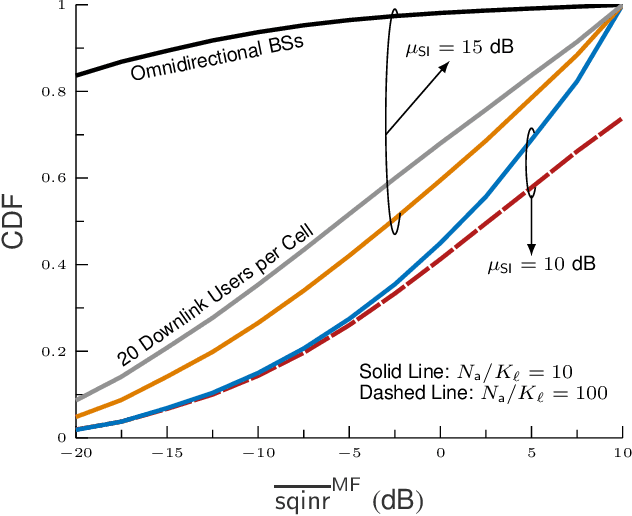
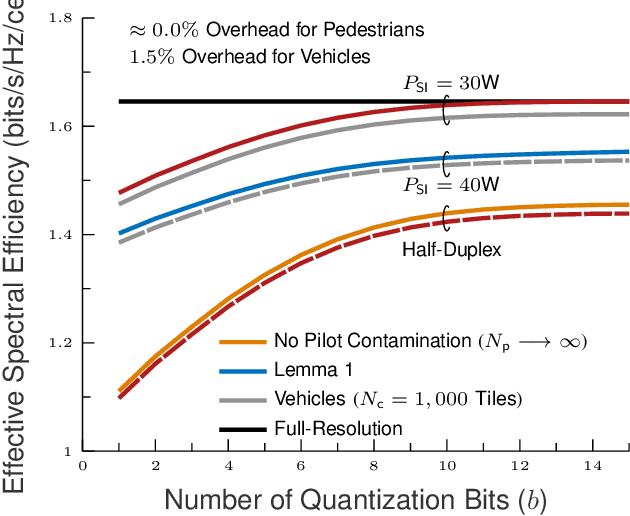
Abstract:In this work, we consider a full-duplex (FD) massive multiple-input multiple-output (MIMO) cellular network with low-resolution analog-to-digital converters (ADCs) and digital-to-analog converter (DACs). Our first contribution is to provide a unified framework for reverse link analysis where matched filters are applied at the FD base stations (BSs) under channel hardening. Second, we derive the expressions of the signal-to-quantization-plus-interference-plus-noise ratio (SQINR) for general and special cases. Finally, we quantify effects of quantization error, pilot contamination, and full duplexing for a hexagonal cell lattice on spectral efficiency and cumulative distribution function (CDF) to show that FD outperforms half duplex (HD) in a wide variety of scenarios.
Forward Link Analysis for Full-Duplex Cellular Networks with Low Resolution ADC/DAC
Mar 26, 2022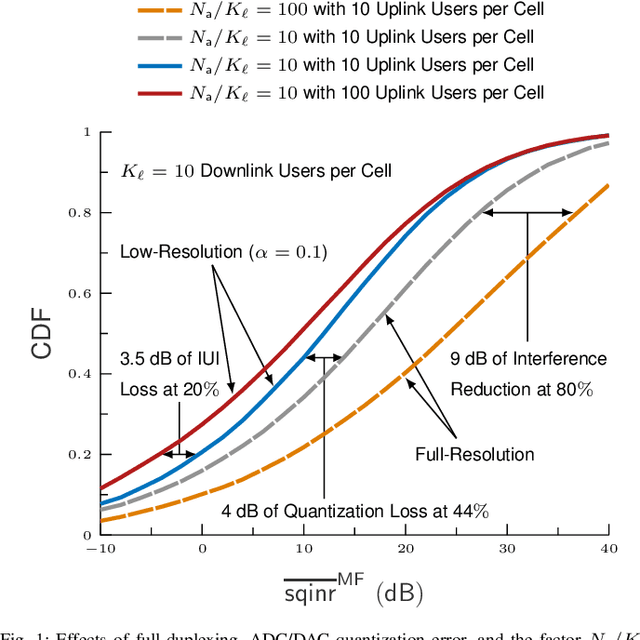
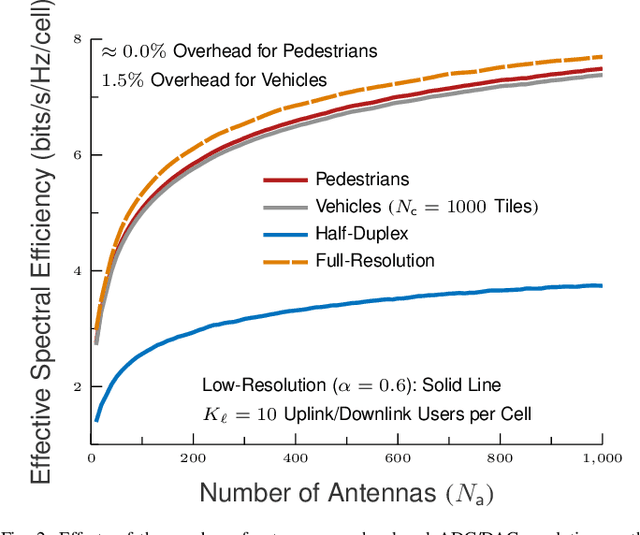
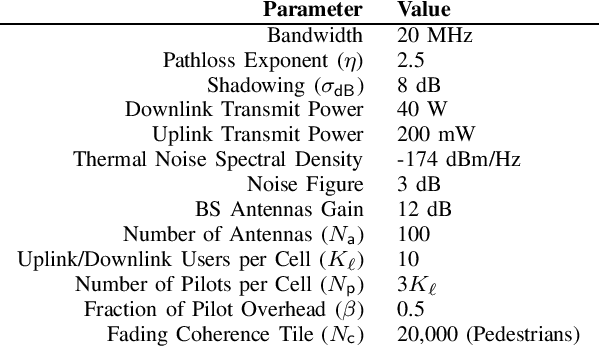
Abstract:In this work, we consider a full-duplex (FD) massive multiple-input multiple-output (MIMO) cellular network with low resolution analog-to-digital converters (ADCs) and digital-to-analog converters (DACs). Our first contribution is to propose a unified framework for forward link analysis where matched filter precoders are applied at the FD base stations (BSs) under channel hardening. Second, we derive expressions for the signal-to-quantization-plus-interference-plus-noise ratio (SQINR) for general and special cases. Finally, we quantify effects of quantization error, pilot contamination, and full duplexing for a hexagonal cell lattice on spectral efficiency and cumulative distribution function (CDF) to show that FD outperforms half duplex (HD) in a wide variety of scenarios.
Full-Duplex Wideband mmWave Integrated Access and Backhaul with Low Resolution ADCs
Feb 06, 2022Abstract:We consider a wideband integrated access and backhaul system operating in full-duplex mode between the New Radio gNB donor and single user equipment. Due to high power consumption in millimeter wave systems, we use low-resolution analog-to-digital converters (ADCs) in the receivers. Our contributions include (1) hybrid beamformer to maximize sum spectral efficiency of the access and backhaul links by canceling self-interference and maximizing received power; (2) all-digital beamformer and upper bound on sum spectral efficiency; and (3) simulations to compare full vs. half duplex, finite vs. infinite ADC resolution, hybrid vs. all-digital beamforming, and the upper bound in spectral efficiency.
Integration of Vehicular Clouds and Autonomous Driving: Survey and Future Perspectives
Jan 15, 2022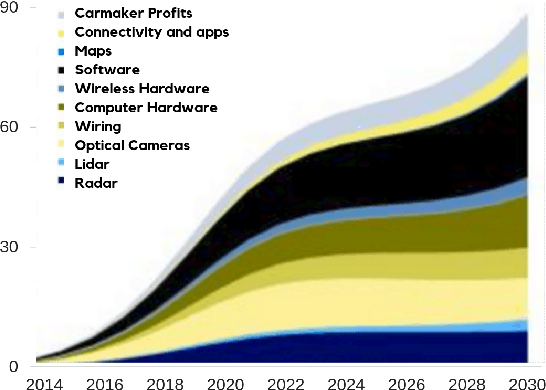
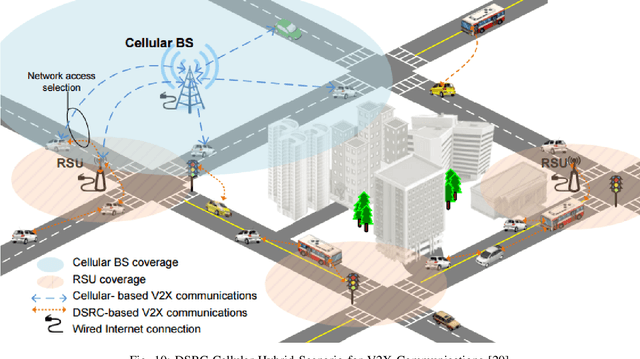
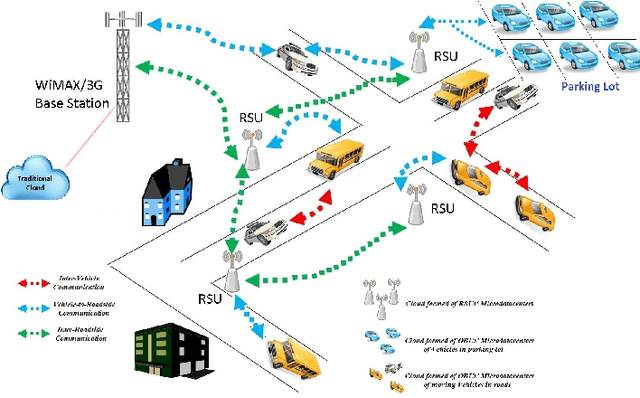
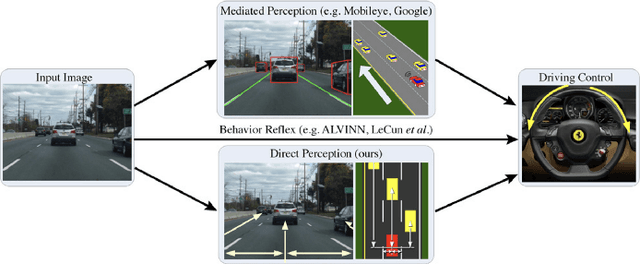
Abstract:For decades, researchers on Vehicular Ad-hoc Networks (VANETs) and autonomous vehicles presented various solutions for vehicular safety and autonomy, respectively. Yet, the developed work in these two areas has been mostly conducted in their own separate worlds, and barely affect one-another despite the obvious relationships. In the coming years, the Internet of Vehicles (IoV), encompassing sensing, communications, connectivity, processing, networking, and computation is expected to bridge many technologies to offer value-added information for the navigation of self-driving vehicles, to reduce vehicle on board computation, and to deliver desired functionalities. Potentials for bridging the gap between these two worlds and creating synergies of these two technologies have recently started to attract significant attention of many companies and government agencies. In this article, we first present a comprehensive survey and an overview of the emerging key challenges related to the two worlds of Vehicular Clouds (VCs) including communications, networking, traffic modelling, medium access, VC Computing (VCC), VC collation strategies, security issues, and autonomous driving (AD) including 3D environment learning approaches and AD enabling deep-learning, computer vision and Artificial Intelligence (AI) techniques. We then discuss the recent related work and potential trends on merging these two worlds in order to enrich vehicle cognition of its surroundings, and enable safer and more informed and coordinated AD systems. Compared to other survey papers, this work offers more detailed summaries of the most relevant VCs and ADs systems in the literature, along with some key challenges and insights on how different technologies fit together to deliver safety, autonomy and infotainment services.
Spectral Efficiency Optimization for mmWave Wideband MIMO RIS-assisted Communication
Dec 15, 2021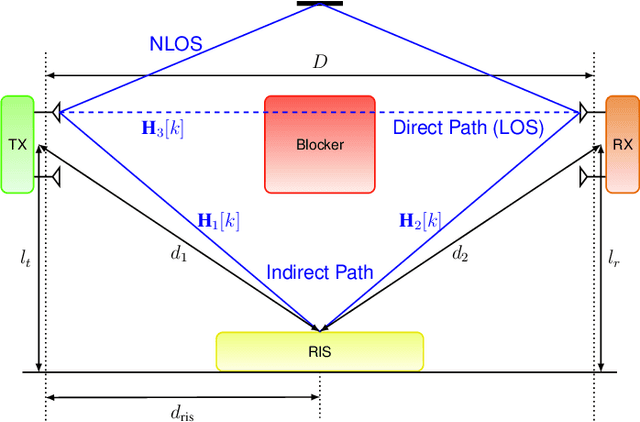
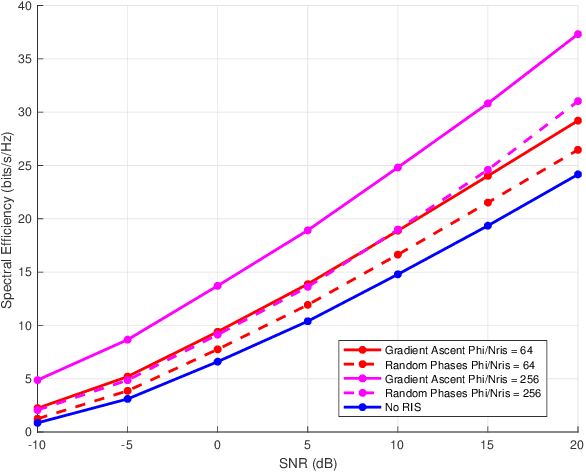
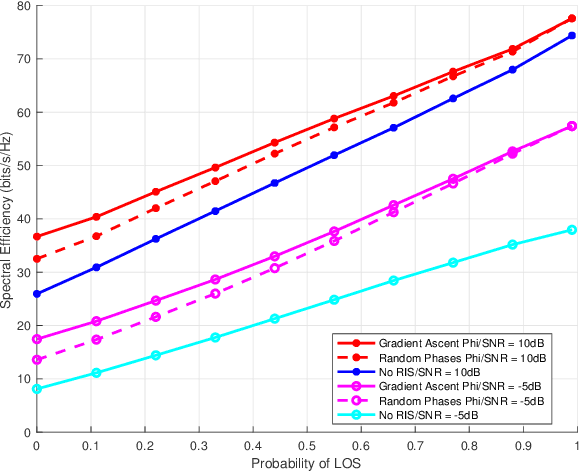
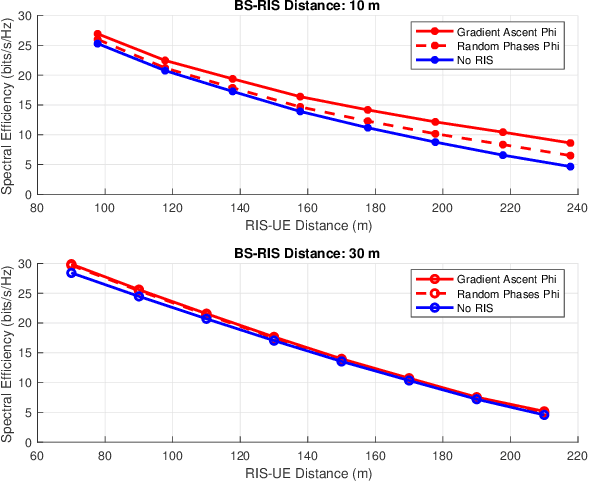
Abstract:Reconfigurable Intelligent Surfaces (RIS) are passive or semi-passive heterogeneous metasurfaces and consist of many tunable elements. RIS is gaining momentum as a promising new technology to enable transforming the propagation environment into controllable parameters. In this paper, we investigate the co-design of per-subcarrier power allocation matrices and multielement RIS phase shifts in downlink wideband MIMO transmission using 28 GHz frequency bands. Our contributions in improving RIS-aided links include (1) enhanced system modeling with pathloss and blockage modeling, and uniform rectangular array (URA) design, (2) design of gradient ascent co-design algorithm, and (3) asymptotic (Big O) complexity analysis of proposed algorithm and runtime complexity evaluation.
Full-Duplex Massive MIMO Cellular Networks with Low Resolution ADC/DAC
Nov 20, 2021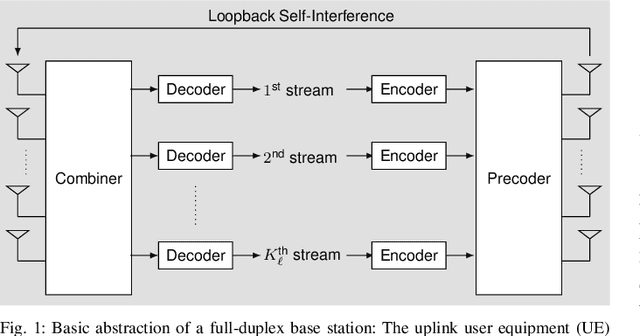
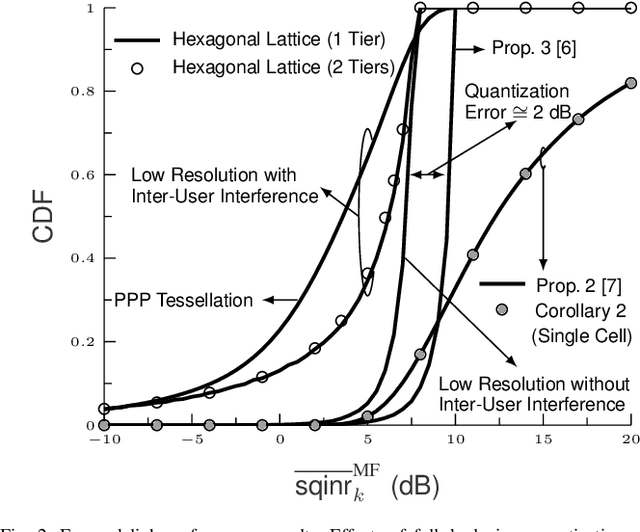
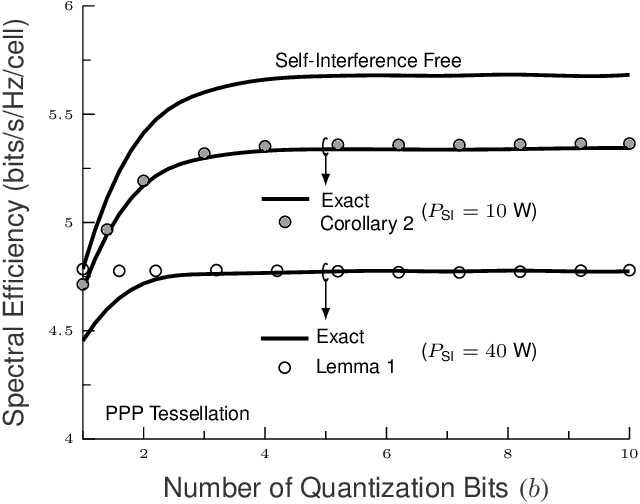
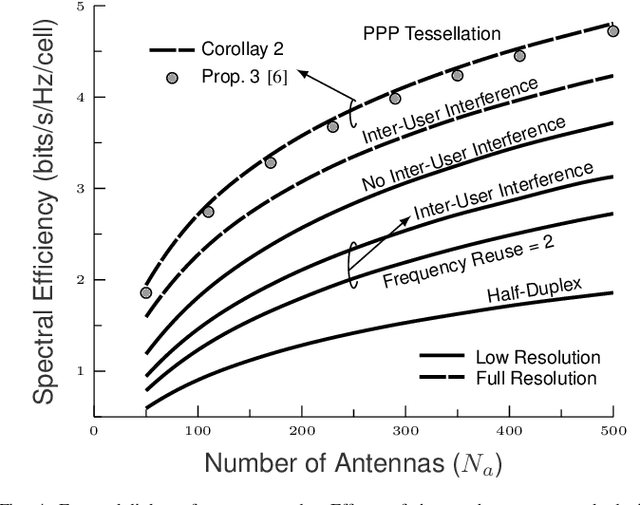
Abstract:In this paper, we provide an analytical framework for full-duplex (FD) massive multiple-input multiple-output (MIMO) cellular networks with low resolution analog-to-digital and digital-to-analog converters (ADCs and DACs). Matched filters are employed at the FD base stations (BSs) at the transmit and receive sides. For both reverse and forward links, we derive the expressions of the signal-to-quantization-plus-interference-and-noise ratio (SQINR) for general and special cases. We further evaluate the outage probability and spectral efficiency for reverse and forward links, and quantify the effects of the quantization error, loopback self-interference and inter-user interference for cells arranged in a hexagonal lattice and Poisson Point Process (PPP) tessellations. Finally, we derive analytical expressions for spectral efficiency for asymptotic cases as well as for power scaling laws.
Joint Beamforming and Interference Cancellation in MmWave Wideband Full-Duplex Systems
Oct 23, 2021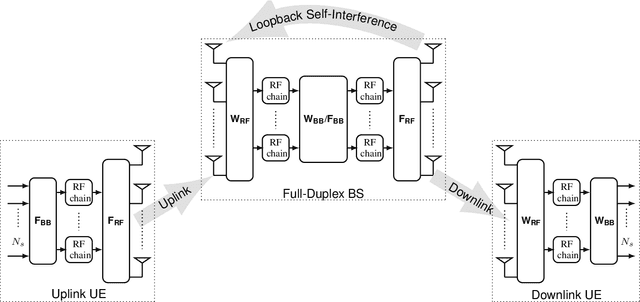
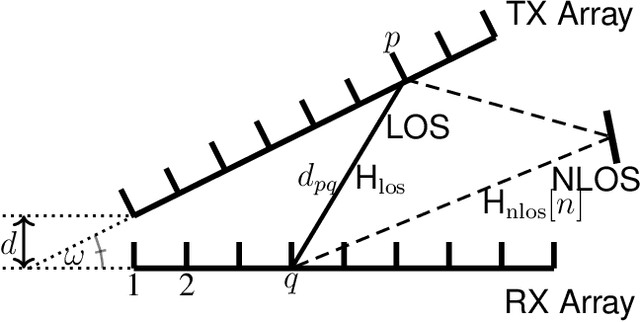
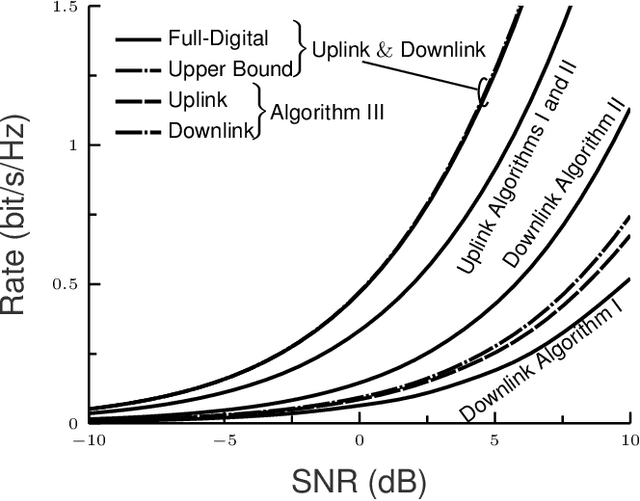
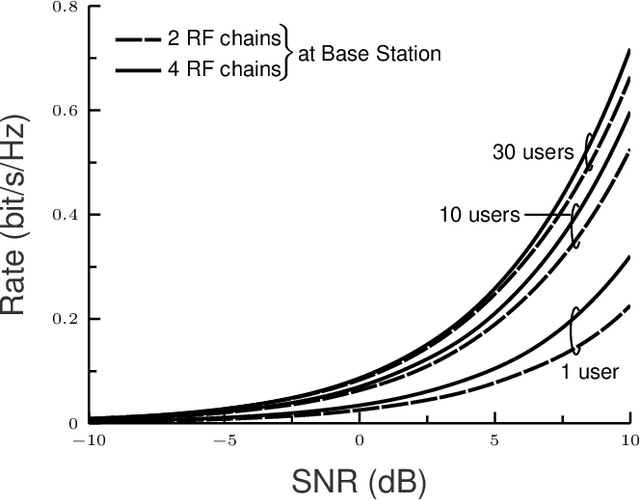
Abstract:Full-duplex (FD) systems have the capability to transmit and receive at the same time in the same frequency band. FD systems can reduce congestion and latency and improve coverage and spectral efficiency. As a relay, they can increase range and decrease outages. Full-duplex (FD) wireless systems have been emerging as a practical solution to provide high bandwidth, low latency, and big data processing in millimeter wave and Terahertz systems to support cellular networks, autonomous driving, platooning, advanced driving assistance and other systems. However, FD systems suffer from loopback self-interference that can swamp the analog-to-digital converters (ADCs) resulting in very low spectral efficiency. In this context, we consider a cellular system wherein uplink and downlink users independently communicate with FD base station. The proposed contributions are (1) three hybrid beamforming algorithms to cancel self-interference and increase the received power, and (2) evaluation of outage probability, spectral efficiency, and energy efficiency of the proposed algorithms. We consider full-digital beamforming and upper bound as benchmarks. Finally, we show the resiliency of Algorithm 2 against self-interference in comparison with Algorithms 1 and 3, as well as conventional approaches such as beam steering, angle search and singular value decomposition.
Performance Analysis of Mixed RF/FSO Relaying under HPA Nonlinearity and IQ Imbalance
Aug 30, 2021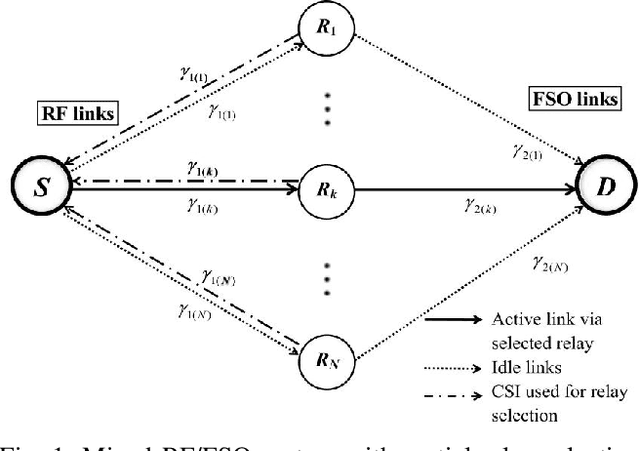
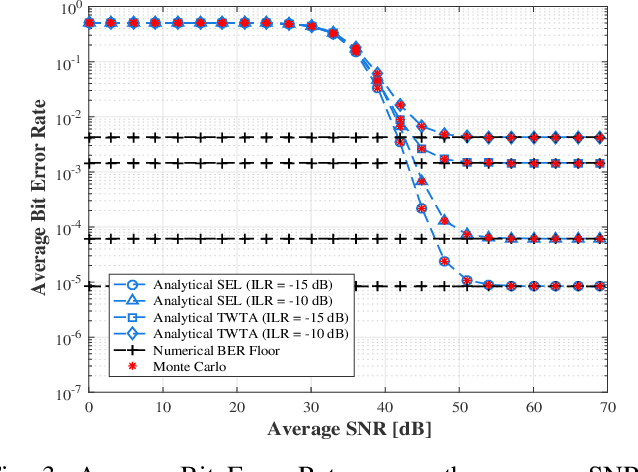
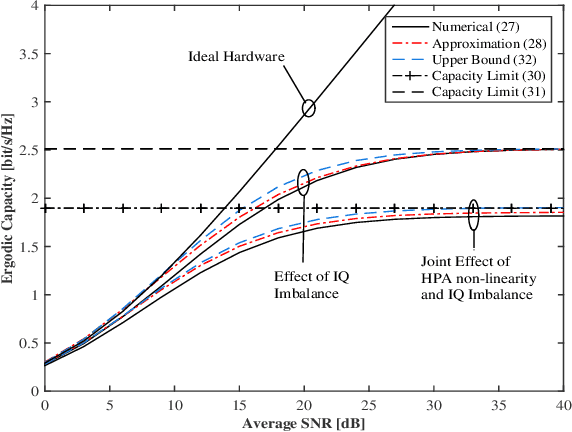
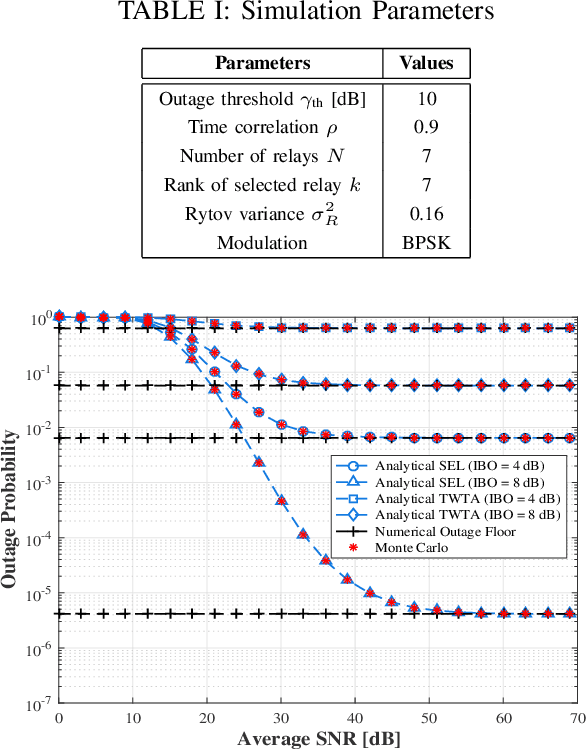
Abstract:In this paper, we present the performance analysis of asymmetric dual-hop RF/FSO system with multiple relays. The RF channels follow the correlated Rayleigh fading while the optical links are subject to the Gamma-Gamma fading. To select the candidate relay to forward the communication, we assume Partial Relay Selection (PRS) with outdated Channel State Information (CSI). Unlike the vast majority of work in this area, we introduce the impairments to the relays and the destination. We will propose three impairment models called Soft Envelope Limiter (SEL), Traveling Wave Tube Amplifier (TWTA) and IQ Imbalance in order to compare the resilience of our system with the RF one against the hardware impairments. Closed-from of the outage probability (OP) is derived in terms of Meijer's G function as well as the upper bound of the ergodic capacity (EC). The Bit Error Rate (BER) and the exact EC are evaluated numerically. Finally, analytical and numerical results are presented and validated by Monte Carlo simulation.
Gradient Ascent Algorithm for Enhancing Secrecy Rate in Wireless Communications for Smart Grid
Aug 11, 2021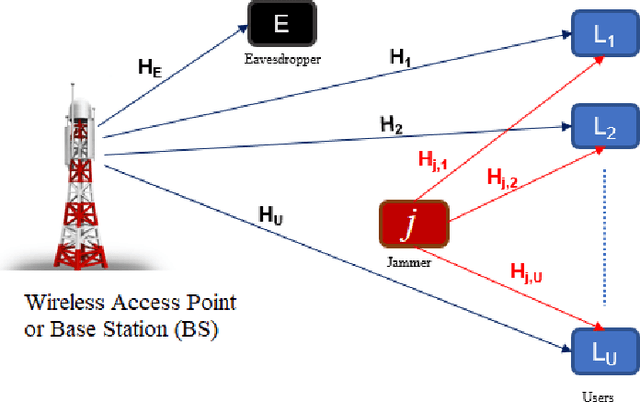
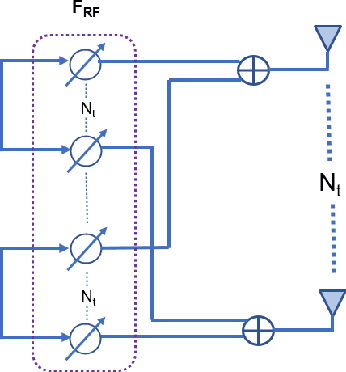
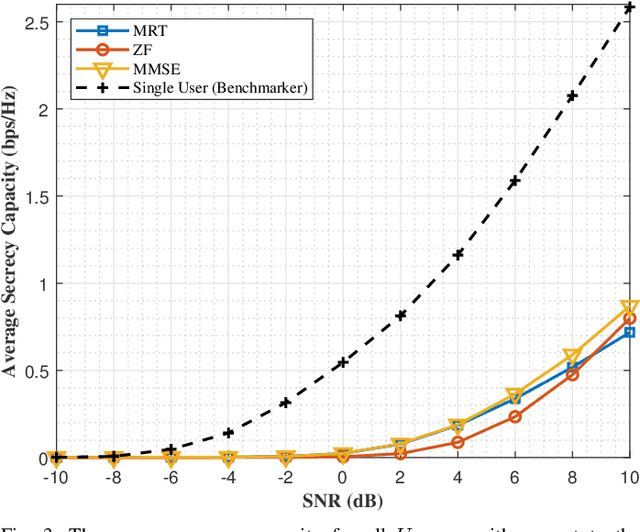
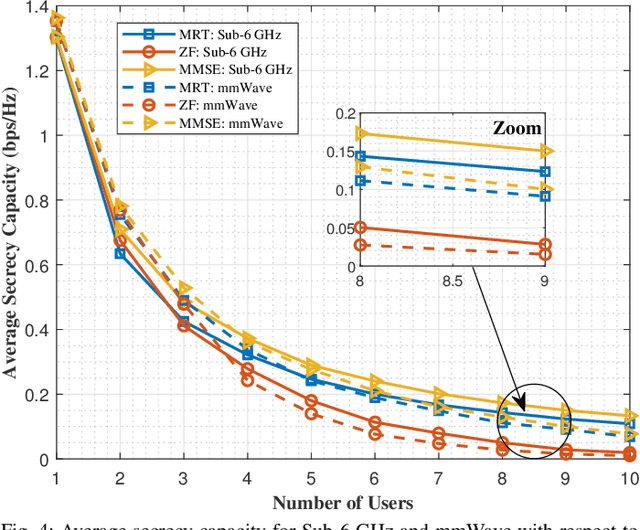
Abstract:The emerging Internet of Things (IoT) and bidirectional communications in smart grid are expected to improve smart grid capabilities and electricity management. Because of massive number of IoT devices in smart grid, size of the data to be transmitted increases, that demands a high data rate to meet the real-time smart grid communications requirements. Sub-6 GHz, millimeter-wave (mmWave) technologies, and massive multiple-input multiple-output (MIMO) technologies can meet high data rate demands. However, IoT enabled smart grid is still subject to various security challenges such as eavesdropping, where attackers attempt to overhear the transmitted signals and the jamming attack, where the attacker perturbs the received signals at the receiver. In this paper, our goal is to investigate jamming and eavesdropping attacks while improving secrecy capacity for smart grid communications. Specifically, we propose to employ a hybrid beamforming design for wireless communications in smart energy grid. In previous works, the secrecy capacity is increased by randomly augmenting the source power or setting the system combiners. Unlike state-of-the-art, we design and evaluate the Gradient Ascent algorithm to search for the best combiners/waveform that maximizes the secrecy capacity in smart grid communications. We also study two different optimization scenarios by considering both fixed and variable transmit power. Numerical results are used for performance evaluation and supporting our formal analysis.
Rate and Power Adaptation for Multihop Regenerative Relaying Systems
Jul 06, 2021
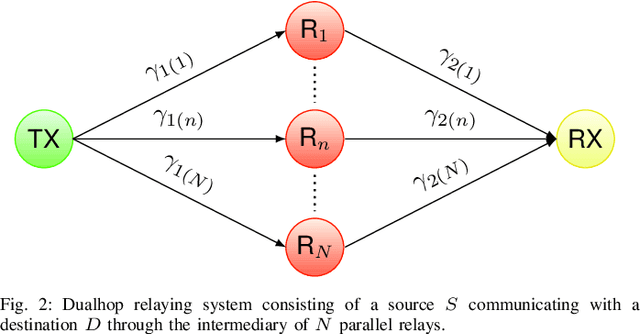
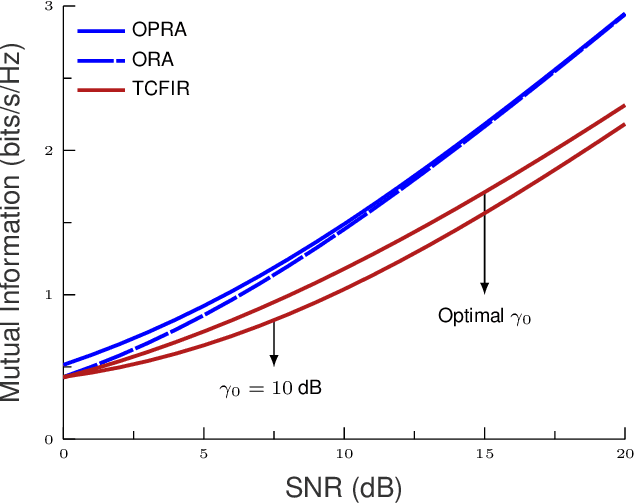
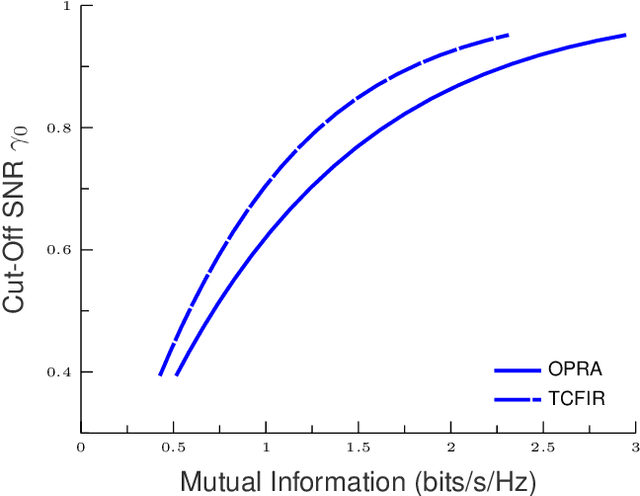
Abstract:In this work, we provide a global framework analysis of a multi-hop relaying systems wherein the transmitter (TX) communicates with the receiver (RX) through a set of intermediary relays deployed either in series or in parallel. Regenerative based relaying scheme is assumed such as the repetition-coded decoded-and-forward (DF) wherein the decoding is threshold-based. To reflect a wide range of fading, we introduce the generalized $H$-function (also termed as Fox-$H$ function) distribution model which enables the modeling of radio-frequency (RF) fading like Weibull and Gamma, as well as the free-space optic (FSO) such as the Double Generalized Gamma and M\'alaga fading. In this context, we introduce various power and rate adaptation policies based on the channel state information (CSI) availability at TX and RX. Finally, we address the effects of relaying topology, number of relays and fading model, etc, on the performance reliability of each link adaptation policy.
 Add to Chrome
Add to Chrome Add to Firefox
Add to Firefox Add to Edge
Add to Edge